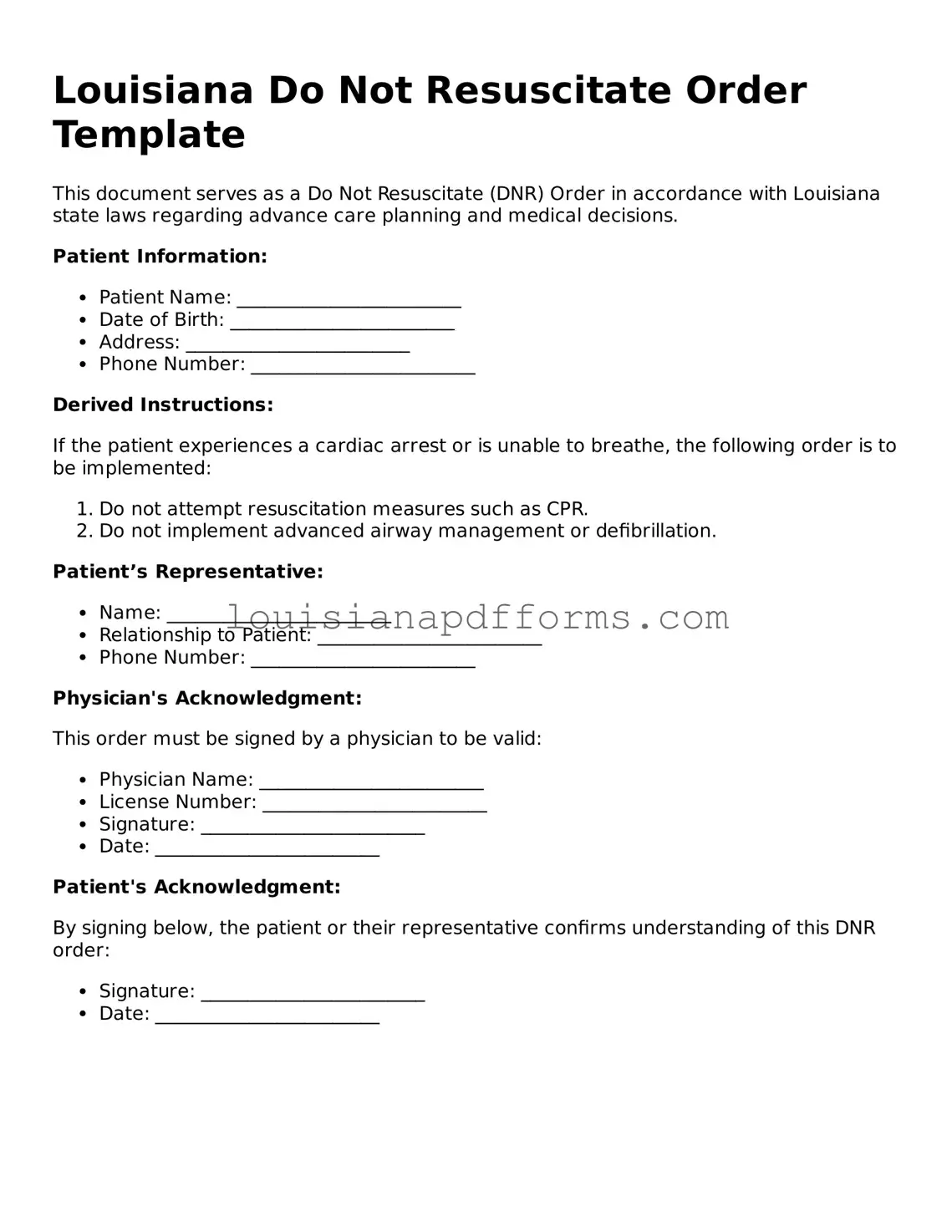Filling out the Louisiana Do Not Resuscitate Order (DNR) form can be a crucial step for individuals wanting to express their medical wishes. However, mistakes can easily occur during this process. One common error is not ensuring that the form is signed by the appropriate parties. The DNR must be signed by both the patient and a physician. Without these signatures, the document may not be valid.
Another mistake is failing to date the form. A DNR order should include the date it was completed. This date is essential for medical personnel to understand the timing of the patient's wishes. If the form is undated, it may lead to confusion or disputes about the patient's intentions.
People often overlook the importance of clear and legible handwriting. If the form is filled out in a way that is difficult to read, medical professionals may misinterpret the information. Clarity is key, so taking the time to write neatly can prevent potential misunderstandings.
Additionally, individuals sometimes forget to provide a copy of the DNR order to their healthcare providers. It’s not enough to just fill out the form; sharing it with doctors and hospitals ensures that everyone is aware of the patient’s wishes. Without this step, the DNR may not be honored in an emergency situation.
Another frequent oversight is not discussing the DNR order with family members. While the form is a legal document, having conversations with loved ones about these wishes can help avoid confusion during stressful times. Families should be aware of the patient’s decisions to provide support and understanding.
Some people mistakenly believe that a DNR order is permanent and cannot be changed. In reality, patients have the right to revoke or modify their DNR orders at any time. It’s important to know that life circumstances and preferences may change, and the DNR should reflect those changes.
Another common error is not reviewing the form regularly. A DNR order should be revisited periodically, especially if there are significant changes in health or treatment preferences. Regular reviews ensure that the document remains current and accurately reflects the patient’s wishes.
Sometimes, individuals fail to understand the difference between a DNR order and other advance directives. While a DNR specifically addresses resuscitation efforts, other directives may cover a broader range of medical decisions. It’s essential to know how these documents work together to ensure comprehensive planning.
People may also neglect to keep the DNR order in an easily accessible location. If the form is stored away in a file cabinet, it may not be readily available in an emergency. Keeping a copy in a visible place, such as on the refrigerator or with other important medical documents, can make a significant difference.
Lastly, some individuals may not seek legal or medical advice when completing the DNR order. While the form itself is straightforward, consulting with professionals can provide valuable insights and ensure that the document meets all necessary legal requirements. Seeking guidance can help avoid mistakes and ensure that the patient’s wishes are honored.
